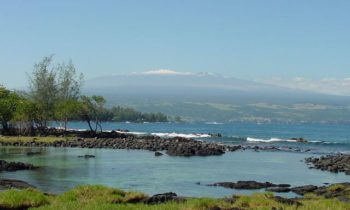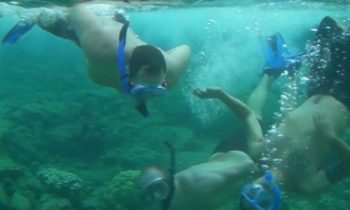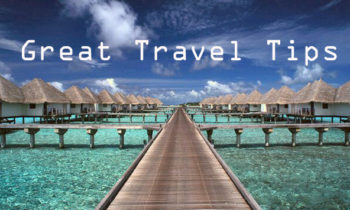Driving across United States is a Blast. Here are some ideas and activities to help you eat, sleep, shower and drive safely. You can download a pdf version of the full article here: Tools for Better Travel - How to drive across the United States pdf
DRIVING ACROSS UNITED STATES: SLEEPING ACCOMMODATIONS
(Organized by lowest to highest cost)
- Rest stops, most rest stops in the US are safe to stop and sleep for a while (but use common sense). They are not designed for camping or extended stays but are plentiful (http://restareas.appspot.com/)
- Couch surfing: Online websites (http://www.couchsurfing.org/) are set up where people let you sleep on their couches. It’s a cheap, great way to meet people, but may potentially be dangerous.
- Off the beaten path: This may work well for a quick place to sleep, but just be careful where you stop to sleep.
- Caves or natural shelters: I had friends who lived in hollowed out redwood tree, and in a cave on a remote beach in Hawaii without incident.
Missions/Homeless shelter: Maybe not the best place to sleep, but if your luck or weather turns it may be the driest and safest place - Local Churches: Some churches have accommodations, so don’t be afraid to ask.
- Abandoned Buildings: Not recommended but just remember if you found them so can others, so be careful.
- Camp grounds: Minimum cost, and great if you have a comfortable car or tent great, if not pray for good weather. (http://www.reserveamerica.com/)
- Hostels: Hostels typically cost 20-50 dollars depending on location and can really help you when it comes to saving money. They are great places to get a hot shower, meals, meet new people, and are fairly safe. (http://www.hostels.com/)
- Vacation Rentals: These typically are converted residential homes or apartments, and the owner fixes them up for longer rental terms (usually they have a 3 day minimum). They are hit and miss on quality and services, so check them out before hand. (http://www.vacationrentals.com/)
- Bed and Breakfasts: B&B’s are inside people’s homes, and the owner rents out rooms and opens up their kitchen/living room areas for common usage, and true B&B’s serve a decent breakfast. (http://www.bedandbreakfast.com/
- Motels: Motels are smaller hotels with less service and you can rent rooms for longer or shorter periods. Hotels: These are great inexpensive places to stay and usually have pools, saunas, room service etc. (http://www.motels.com/)
- Hotels: When traveling hotels come in all shapes and sizes, and basically refer to anyplace that rents rooms, but provides full service and are staffed 24 hours. (http://www.hotels.com/ )
- Resorts: A resort is basically a large area with many accommodations all in one facility. They generally cost more than other hotels, but provide numerous services. (http://www.luxuryresorts.com/ )
DRIVING ACROSS UNITED STATES: SHOWERING ALONG THE WAY
-

Rest stops rarely have shower facilities, unless they are larger.
- Local colleges often have large shower facilities in their gymnasium areas.
- Swimming pools/lakes/beach areas always have places to shower off (although sometimes outside).
- Churches or community centers: Larger community centers or churches have shower facility, so don’t be afraid to ask.
- Health clubs and local Y’s: All health clubs and Y’s have day rates which includes showers.
- Portable showers: You can buy or make portable showers, which are basically a bag with a hose attached, that you can hook up on something higher than yourself (kind of like water bottles used by mountain bikers). Also a nearby garden hose can be used in a pinch.
DRIVING ACROSS UNITED STATES EATING ALONG THE WAY
(Organized from lowest to highest cost)
- Community feeding projects: All you need to do is ask the closest homeless person and they can tell you (although they may choose not to).
- Local food banks: Many churches and catholic charities have food banks where food can be purchased inexpensively (or for free).
- Dollar stores: Many dollar stores have food isles and its surprising what you may find, although it is usually processed foods, but what can you say for only a buck.
- Day old bakeries/food outlets: Day old bakeries generally have baked items that are near their expiration dates. Food outlets usually have canned, boxed, and other types of packaged foods that may be damaged or older, but usually still edible.
- Picnicking with cheap coolers: Styrofoam coolers are only a few dollars and can save hundreds over time. So Pick one up with a bag of ice and some fruit, vegetables, bread, sandwich makings, cereal, etc and stop to eat along the way.
- All you can eat Buffets: All you can eat salad/soup bars serve as a great healthy and inexpensive way to eat at least one large meal a day.
- Fast-food: You can still find dollar menu items in many fast food places, and it can a great alternative for a cheap bite to eat.
- Local hangouts: One of the joys of traveling is trying the local cuisine, and no better and cheaper place than where locals eat. You can find these by asking around, or looking for the eateries with the longest lines.
- Fine Dining: This of course is a great way to treat yourself, however it can also kill your budget so dine wisely.
DRIVING ACROSS UNITED STATES THINGS TO DO ALONG THE WAY
-

Museums: Many museums have lower cost entrance fees at certain days or times and some countries like the UK have removed entrance fees altogether
- National Parks: National parks have increased entrance fees, but many do not charge if you walk or bike in.
- Skip tourist attractions: Many tourist attractions are overhyped and overcharged. Do your research before hand. You can still enjoy wandering around many, and there are areas to visit without paying fees.
- Explore off the beaten path: Many times the greatest sites are nearby tourist attractions, but most don’t take the time to explore. My favorite times are always wondering around back streets and through buildings that have no official designation, but have their own treasures to uncover.
- Art Galleries: Love to see Picasso, but don’t want to cough up the $25 entrance fee? Don’t worry there are many undiscovered Picassos’ in retail art studios all around the world.
- Sites with benefits: Many times there are also great sites that have entrance fees, but that have things included in the cover charge. For example the Guinness Factory in Dublin gives a pint of Guinness at the end of the trip, and it has lots of cool things to see and do along the way.
- Public Parks and Buildings: Many of the great places to visit have been turned into public parks or buildings with little or no cost for entrance.
- Local schools and universities: Educational facilities often have low-cost events like concerts, plays, science fairs, art shows, and athletic events with times and dates posted all around the campus.
- Public Libraries: Public libraries offer more than free access to books and other information, many also provide access to free DVD’s, movies, music, books on tape, and often are housed in great historical buildings.
- Pick up sporting games: Like to play or try a new sport, many activities occur at parks and courts all around the world. Most people don’t mind if you join in, just remember our motto, don’t be afraid to ask.
- Historic Towns: There are many fantastic historical places to see in America especially along migration trails.
- Hostels: There are many great hostels, found on-line, which offer inexpensive activities and are a great place to meet people.
- Highways: The US road system is the best in the world, and the interstate system is generally free and a great way to go and travel. American road systems are numbered, and interstate highways that run east and west are even-numbered (i.e. 10, 40, 80), and odd-numbered highways run north and south (i.e. 101, 5, 55).
- Smaller cities: These are great places to stay, people are typically friendlier, and they are easier to navigate, although most have limited public transport.
- Cities with better public transportation: Areas like the San Francisco/Bay Area, Chicago, Seattle, Portland, Boston, Denver and NY are great places to visit and have great public transportation.
- Pick up a guide-book or your local activities list: You would be surprised at all the great things to do around a city or countryside that can give hours of low, or no cost activities, just by reading about it.
- Meet local people: Many times we travel and overlook the people who know the area the best, and that is your everyday citizen of the area. Although typically it helps to approach them during their leisure time, so go to your local coffee shop, pub, and park. So remember, don’t be afraid to ask, you might just find a lifelong friend or even a tour guide for FREE!
DRIVING ACROSS THE UNITED STATES CHOOSING DESTINATION & TRAVEL TIMES
- Americans love convenience: The US is very citizen oriented and unlike most countries there are many free public access areas like water-fountains, restrooms (stocked with toilet paper & soap), rubbish bins, handicap access ramps, parking areas, sidewalks, public parks, and other amenities.
- Do not limit yourself to highly touristic areas: Many times they are costly, overcrowded, overhyped and disappointing. So do your research, ask around when you arrive, and make sure you save time for unexpected stops and adventures along the way.
- Choose wisely: Due to the size and distances between population centers, you could spend all your time driving, and not enjoying your destination. Remember you can save time, by dropping off and picking up different cars along the way, and catching commuter airlines between far apart destinations.
- Watch out for time constraints and crowds: Climbing the statue of liberty is a great experience, but sometimes there is so many people pushing behind you, that you only have a few seconds to enjoy the view from the top.
- Check out down town areas: Most cities have restored old/down town areas and they are full of activities and things to do.
- Get off the highway: For some reason Americans build roads everywhere, and the best times can be had by veering off course and checking out the back roads.
- Freeways versus highways. Typically highways turn into freeways in larger cities, and traffic can slow to a crawl (literally you could crawl faster). It might take 6 hours to drive 400 miles on the highway, and then 3 hours to go 40 miles on the freeway.
- Beware traffic patterns: American traffic tends to be heavy early morning from 5 to 9, and early evening 3 to 7. So try to stay away from large cities at this time.
- Great Signage: One thing the US road system has down pat is signage, so don’t worry about not knowing where you’re going. On all interstate highways they will count down like clockwork the distances, locations, turn off locations for just about everything, cities, gas, rest stops, hospitals, schools etc.
- Average speeds: You can basically travel safely at around 70 mph on most highways. In Mid-America it’s typically less crowded and sometimes you can average 80+ on longer stretches. In larger cities you typically can average about 50-60 mph depending on traffic.
- Road conditions: By and large US roads are more many, wider, and better maintained than other countries.
- Public parks and recreations facilities: There are many in most states and access is almost always free of charge, so check them out.
These are just a few things to help you Driving Across United States including the Sleeping, Eating, Showering, Destinations and Activities that will make your trip fun.






